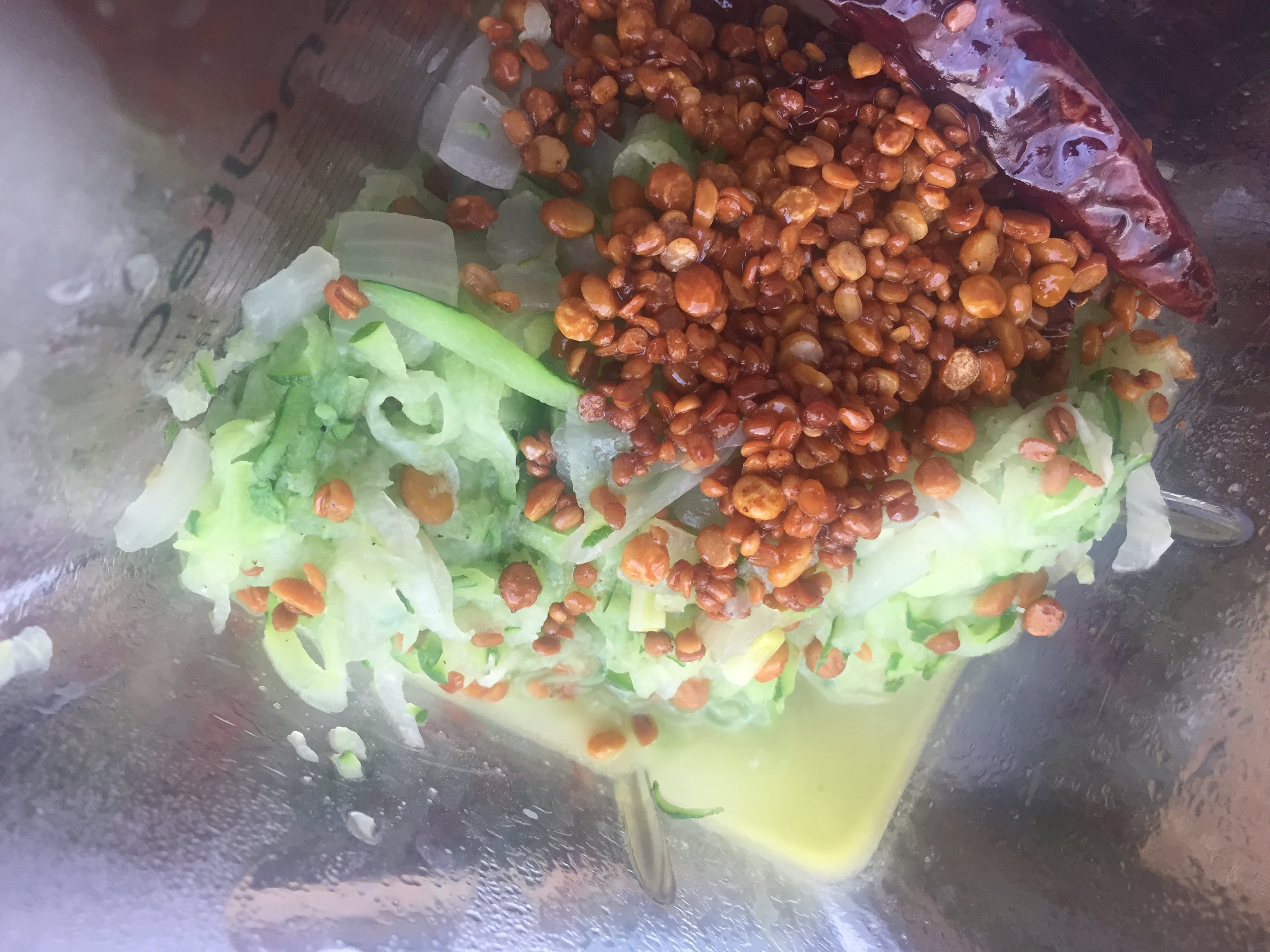Pesto by any other name...
Pesto, from the Italian Pesta meaning to pound, is a sauce made by pounding or crushing pine nuts, basil, garlic, olive oil, pecorino, and some salt.
The Tamil word 'Tho-hai-yal', also meaning 'to crush or macerate', is also a sauce made by grinding together a vegetable, some roast lentils in oil, salt, and Chile peppers. So, in other words, a pesto except it is nut and dairy free! And in my opinion, although I love a good Italian pesto over pasta, a well-made Thohaiyal adds a most delicious punch to a steaming bowl of rice like nothing else can!
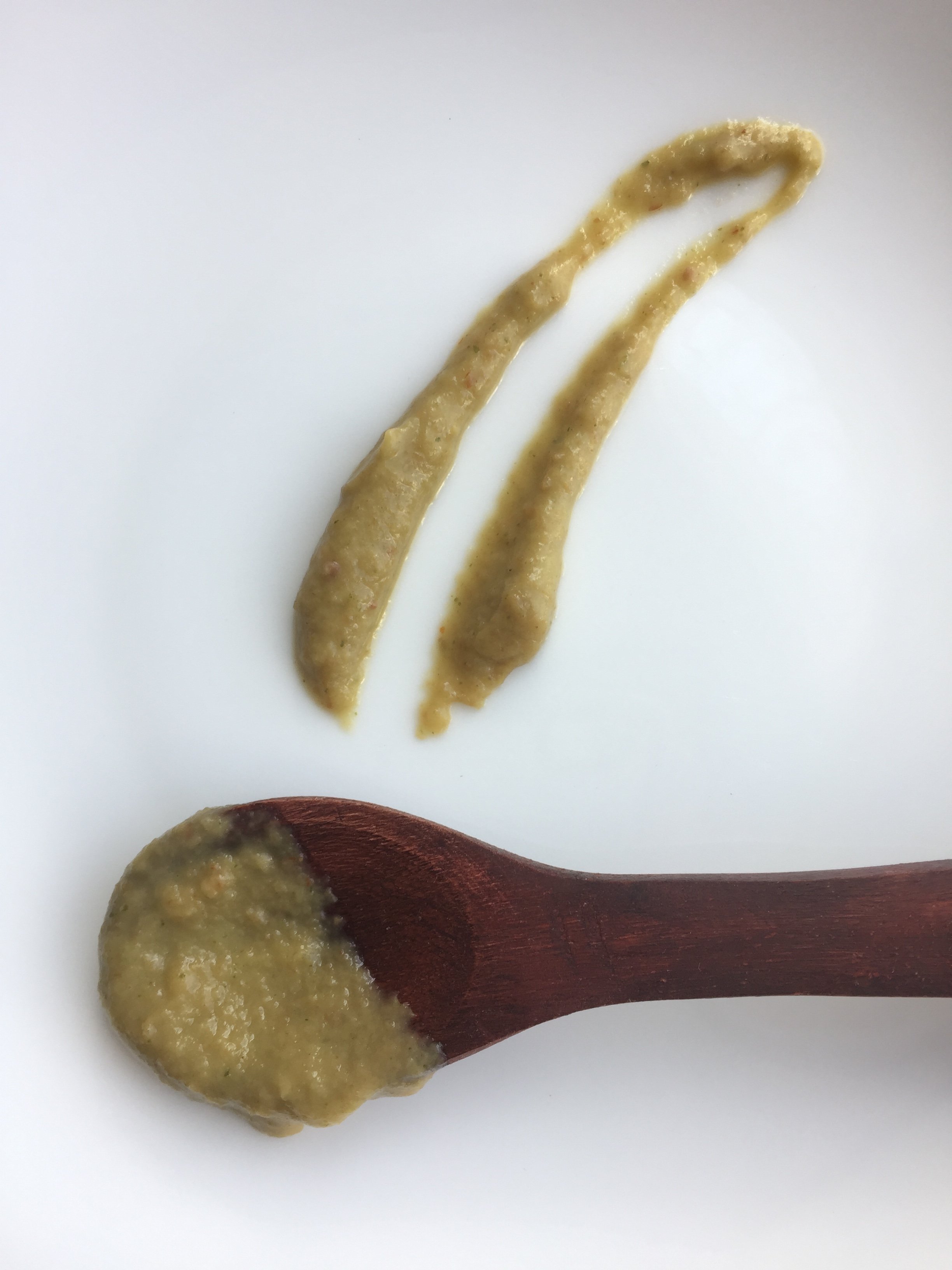
And just like a pesto, Thohaiyal is quite versatile. It can be made with any fleshy vegetable, or even peels. A very popular version uses fresh Cilantro (a take on the basil pesto!). One can add some grated coconut to the roasting stage and get a rich pesto that is still tree-nut free. (Cross-reactivity with tree nut allergies is quite rare). When using herbs like cilantro and mint, or any vegetable that is also astringent/bitter like eggplant, adding a dash of sour tamarind or lemon juice picks up the flavors!
[gallery ids="876,877" type="rectangular"]
My favorite Thohaiyal uses Chayote squash. This vegetable is easily available at many supermarkets now. I found a 'black Chayote' at my local farmer's market with the skin a rich, bottle-green unlike the more common pale green version. This one is also a good bit larger, the size of a small melon. When cut, it usually has a soft seed that can be discarded. This one appears seed-free (a hybrid?).
CHAYOTE SQUASH THOHAIYAL
1 medium size Chayote squash, washed, and coarsely grated
1/2 sweet onion diced (optional)
1 tablespoon each of yellow-split pea lentils and white, Urad lentils (black gram)
1 or more dried red chiles to taste
Pinch of Hing or Asafetida
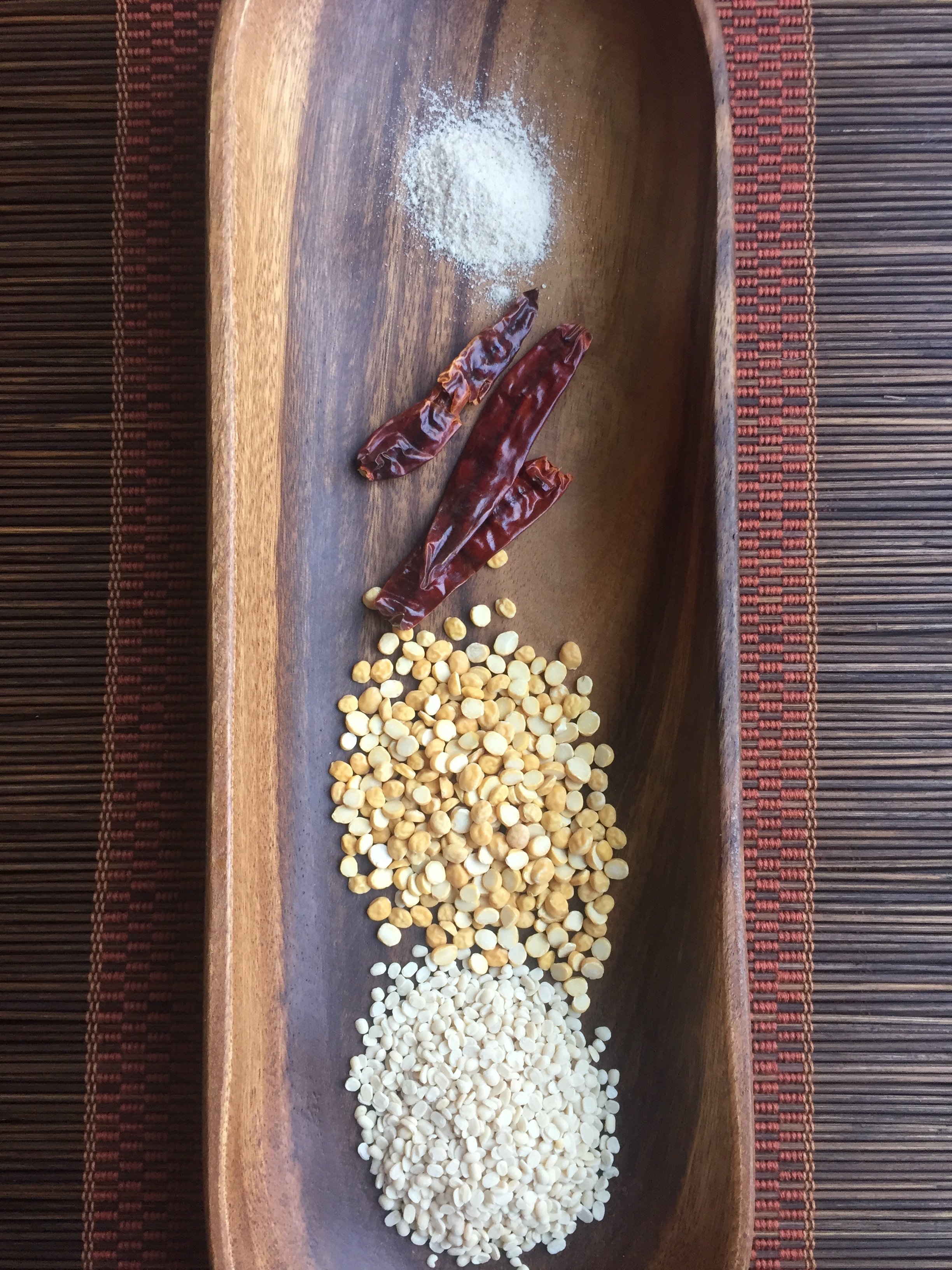
- Start with washing and coarsely grating the vegetable - in this case, the squash. This allows the vegetable to flash-cook; a larger dice would need a longer cooking time and one would lose the crisp, fresh flavor of the vegetable.
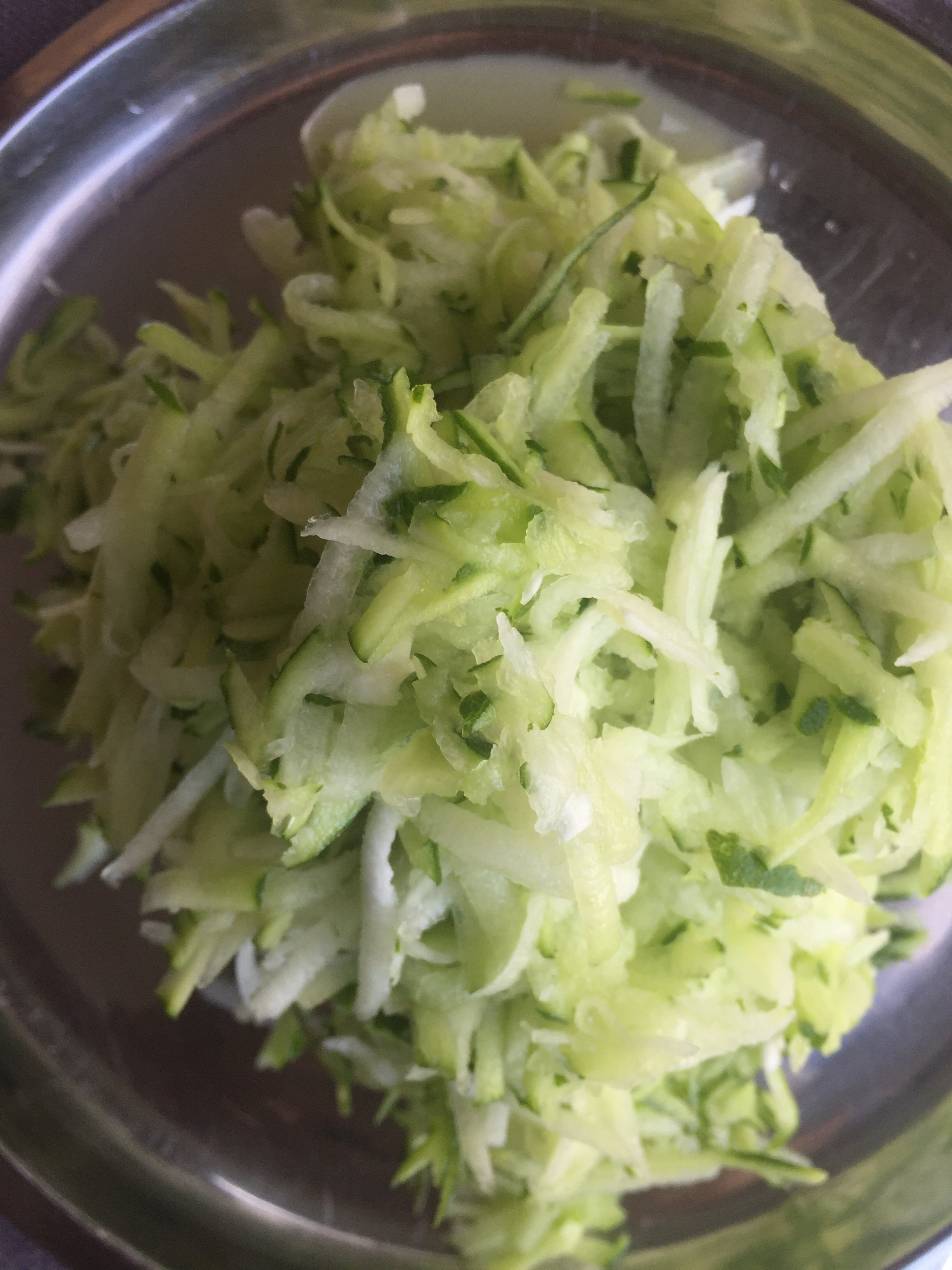 2. To a hot skillet, add a couple of tablespoons of coconut oil. Add the lentils and red chiles and roast for a few minutes until they turn golden brown and smell divine!
2. To a hot skillet, add a couple of tablespoons of coconut oil. Add the lentils and red chiles and roast for a few minutes until they turn golden brown and smell divine!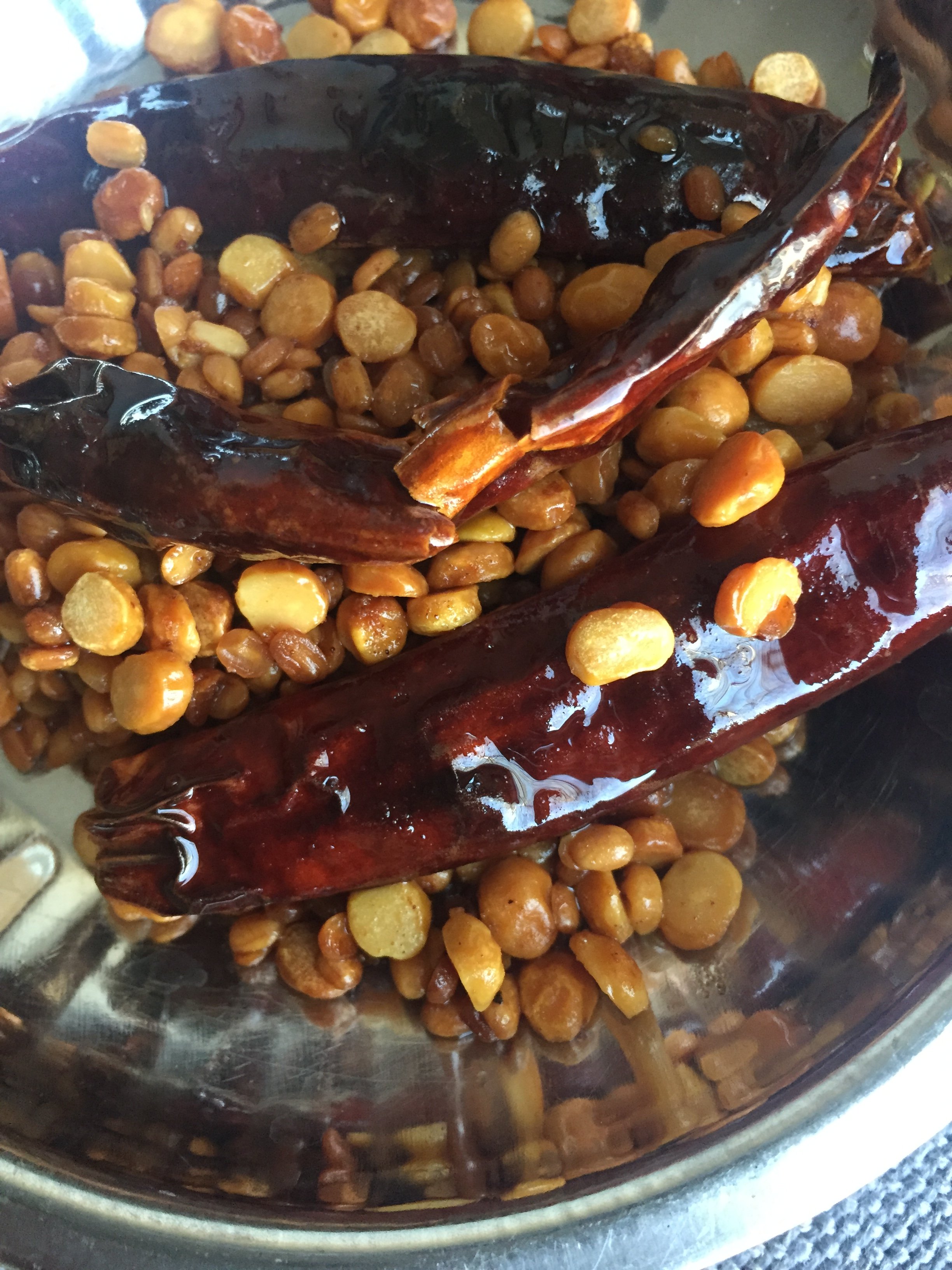 3. Remove into a bowl. To the same skillet, add onions if using and sauté for a few minutes till they turn translucent. Then add the grated vegetable. Add salt to taste - this allows the vegetable to release its water and cook in its own juice without diluting the flavor. Cover and cook for a couple of minutes. Remove from heat - the vegetable just needs to steam quickly.4. Add Hing to the vegetable mixture and blend all ingredients smoothly in a blender. Enjoy as a side with any dish. Thohaiyal is traditionally eaten mixed into a warm bowl of rice with some raw sesame oil drizzled over it.
3. Remove into a bowl. To the same skillet, add onions if using and sauté for a few minutes till they turn translucent. Then add the grated vegetable. Add salt to taste - this allows the vegetable to release its water and cook in its own juice without diluting the flavor. Cover and cook for a couple of minutes. Remove from heat - the vegetable just needs to steam quickly.4. Add Hing to the vegetable mixture and blend all ingredients smoothly in a blender. Enjoy as a side with any dish. Thohaiyal is traditionally eaten mixed into a warm bowl of rice with some raw sesame oil drizzled over it.